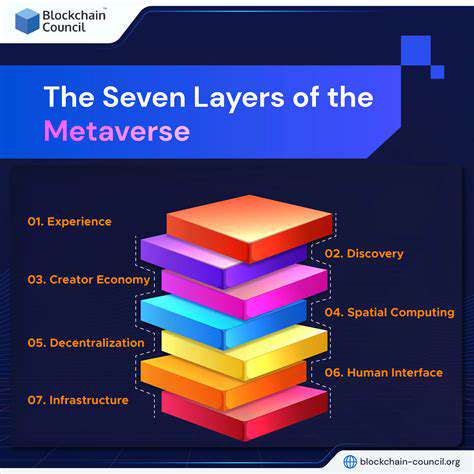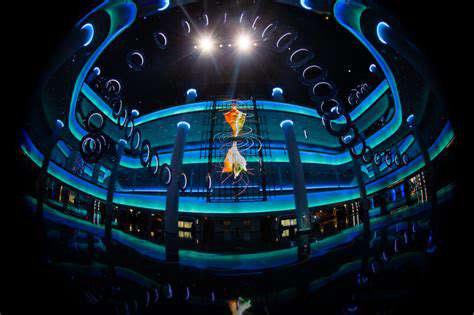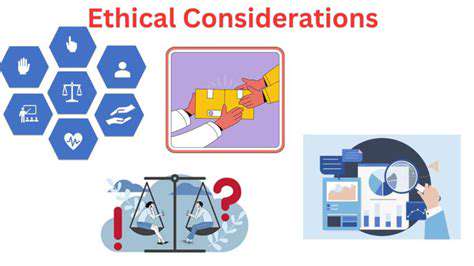The Economics of Immersive Content Distribution
Navigating the Costs of Immersive Content Creation and Delivery

Understanding the Hardware Investment
Creating immersive experiences with virtual reality (VR) and augmented reality (AR) demands careful budgeting for hardware. The initial outlay covers not just headsets but often powerful computers with dedicated graphics cards to run the software smoothly. Prices fluctuate dramatically based on the depth of immersion and technical sophistication required. While entry-level VR devices are relatively affordable, premium models featuring ultra-high-resolution displays and precision tracking systems can triple the investment.
Many projects also require supplementary equipment like motion controllers or full-body tracking systems to enhance interactivity. Thoughtful evaluation of your project's unique requirements will help optimize both equipment selection and budget allocation. For instance, an architectural visualization might prioritize display clarity over motion tracking, while a training simulation may require extensive interactive peripherals.
Software and Content Development Costs
The creative side of immersive projects presents its own financial considerations. Developing VR/AR applications calls for specialized talent in areas like 3D environment design, interactive programming, and spatial audio engineering. These niche skills command premium rates whether you're contracting specialists or building an in-house team.
Constructing detailed virtual environments with realistic textures and lighting can consume hundreds of hours. Project complexity directly correlates with development time - a simple product demo might take weeks while a fully interactive training simulation could require months. Many teams supplement original content with purchased 3D assets and sound libraries, making careful license management essential for budget control.
Operational and Maintenance Expenses
Long-term ownership costs often surprise first-time adopters. Headsets require regular cleaning, occasional part replacements, and periodic upgrades to stay current. Proactive maintenance schedules prevent performance degradation and extend equipment lifespan. For organizations with multiple units, these recurring costs multiply quickly.
Effective use of the technology demands proper training. Investing in comprehensive staff education reduces troubleshooting time and maximizes the technology's potential. Energy consumption represents another ongoing consideration, especially for facilities running multiple high-performance systems simultaneously.

Forecasting Future Trends and Opportunities in Immersive Content Distribution
Understanding the Current Landscape of Immersive Content
Today's immersive technology ecosystem evolves at breakneck speed. VR systems now deliver near-photorealistic experiences while AR applications blend digital elements seamlessly with physical environments. This rapid advancement creates both exciting possibilities and complex challenges for content strategists. Successful navigation requires deep understanding of current hardware limitations, software capabilities, and user behavior patterns.
Several technological breakthroughs drive this evolution. More powerful processors, higher resolution displays, and widespread 5G adoption collectively enable richer, more responsive experiences that fundamentally change human-digital interaction.
Emerging Technologies Shaping the Future
Cutting-edge innovations are redefining what's possible in immersive media. AI integration allows for dynamic content that adapts to individual users in real-time. Meanwhile, photorealistic rendering techniques create virtual worlds indistinguishable from reality. These advancements converge to enable unprecedented levels of personalization and immersion.
Machine learning algorithms now track user engagement metrics at microscopic levels, allowing content to morph based on subtle behavioral cues. This granular adaptation represents the next frontier in audience retention and satisfaction.
The Role of Content Creators in the Immersive Era
Modern creators must master entirely new storytelling paradigms. Traditional linear narratives give way to branching, interactive experiences where users influence outcomes. This demands skills in spatial design, environmental storytelling, and user psychology that differ markedly from conventional media production.
Successful immersive creators develop keen intuition for how users navigate and interpret three-dimensional spaces. They craft experiences that guide attention naturally while preserving the illusion of free exploration. This delicate balance requires both technical expertise and artistic vision.
Distribution Strategies for the Future of Immersive Content
Effective content delivery requires multi-platform compatibility. Tomorrow's successful experiences will transition seamlessly between VR headsets, AR glasses, smartphones, and yet-to-emerge devices. This cross-platform approach maximizes accessibility while maintaining consistent quality standards.
Network optimization becomes critical as immersive content grows more data-intensive. Adaptive streaming technologies that adjust quality based on available bandwidth will prevent frustrating lag or resolution drops. Content delivery networks may need specialized configurations to handle the unique demands of spatial media.
Market Opportunities and Challenges
The immersive sector offers tremendous potential but presents formidable barriers to entry. While development costs remain high, successful projects demonstrate impressive ROI through enhanced engagement metrics. The key challenge lies in building sustainable audiences rather than one-time users.
Community building emerges as a critical success factor. Platforms that foster meaningful social interaction within virtual spaces show significantly higher retention rates. Simultaneously, addressing physical accessibility concerns ensures the technology's benefits reach the broadest possible audience.
Read more about The Economics of Immersive Content Distribution
Hot Recommendations
- Immersive Culinary Arts: Exploring Digital Flavors
- The Business of Fan Funded Projects in Entertainment
- Real Time AI Powered Dialogue Generation in Games
- Legal Challenges in User Generated Content Disclaimers
- Fan Fiction to Screenplays: User Driven Adaptation
- The Evolution of User Driven Media into Global Entertainment
- The Ethics of AI in Copyright Protection
- Building Immersive Narratives for Corporate Training
- The Impact of AI on Music Discovery Platforms
- AI for Audience Analytics and Personalized Content











